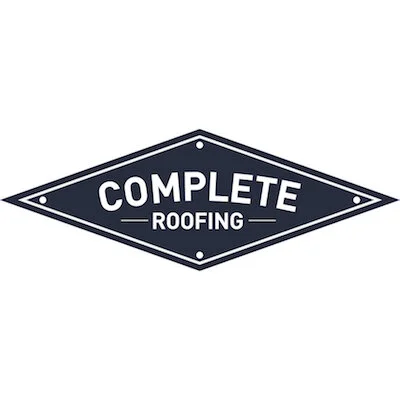One key factor that determines if you need a new roof is age. Since roofs don’t last forever, the most critical question is: How long does a roof last?
Generally, you can expect your roof to last about 20 years. However, the actual lifespan of a roof depends on several factors, including the type of roofing materials used and the environment.
Whether you’re buying a new home or you’re planning on staying put in your current house, you probably have an idea of the condition of your roof. But it can be hard for homeowners to gauge exactly when they should get a roof replacement.
In this article, we discuss 7 different types of roofs, how long each different roof type lasts, and what signs to look out for when your roof needs to be replaced.
Summary
Roof longevity depends largely on the type of roof covering, the quality of the materials, and the climate.
Most homes in the United States have asphalt shingle roofs.
The average lifespan of a roof is about 20 years.
Clay tile and slate are the longest-lasting roofing materials, often lasting 100 years or more.
Different Roof Materials and How Long They Last

Asphalt shingles lifespan
Asphalt shingles are the most common roofing material in the United States because they are affordable and durable, but how long does a shingle roof last?
Most asphalt shingle roof lifespans are between 15 and 40 years. However, this can vary based on the climate and weather conditions where you live. For example, asphalt shingles won’t last as long in Arizona because the dramatic temperature changes and prolonged sun exposure will cause the shingles to crack.
Made of fiberglass and asphalt sealant, asphalt shingles can effectively protect your roof structure from snow, wind, heavy rain, and harsh UV rays.
The type of asphalt shingles you choose also affects how long your roof will last.
When your asphalt shingles start to reach between 15 and 20 years of age, or if your roof has experienced storm damage, you should consider a roof inspection to determine if you need a replacement.
Signs you need an asphalt roof replacement
Cracked shingles, curling, and/or mineral granules from the shingles in your gutters.
Metal roofing
The average metal roof lifespan is anywhere between 40 and 70 years, with warranties from 20 years to a lifetime, depending on the type of metal and the design of the roof. Metal roofs made of premium metals like copper and zinc can sometimes last for over 100 years!
There are a few different types of metal roofing, and each one offers a different lifespan.
Signs you need a metal roof replacement
Widespread rust, discoloration, roof leak damage, water staining in the attic, and/or mold.
Wood shakes and shingles
Usually, a wooden roof lasts for about 30 years with warranties that run up to 40 years. However, in order for wood shingles and shake roofs to last, you need to perform regular, proper maintenance. A wood roof requires upkeep that includes yearly cleanings, as well as repainting or staining every 5 years.
The type of wood that you use will also determine how long the roof will last. Cedar shakes, for example, last longer than other types of wooden shingles because cedar is rot and insect-resistant. Cedar shakes are also able to withstand winds up to 245 miles per hour, which falls within range for an F4 tornado. Their strength makes cedar shakes a popular type of roofing material for coastal homes.
Signs you need a wooden roof replacement
Splitting shingles, rotting shingles, pest damage, mold or mildew, and/or algae growth.
Clay tile roof
Clay tile roof lifespan is anywhere between 50 and 100 years, and manufacturers offer warranties anywhere from 30 years to a lifetime! The life expectancy of clay tile roofs is so long because tiles are weather, rot, and fire-resistant.
To ensure that your clay tile roof lasts as long as possible, it’s important to properly clean your roof. If a clay tile roof isn’t regularly cleaned, it can experience a buildup of algae, moss, and mold. Moss is the most dangerous, as its roots can penetrate the tiles, ultimately causing roof leaks.
Clay tile roofs won’t last as long in colder climates, as constant freezing and thawing can easily damage the tiles. However, you can have your clay tiles sealed to help prevent cold weather impacts.
Signs you need a clay tile roof replacement
Cracked tiles, chipped tiles, pieces of tile in gutters, roof leaks, and/or water staining in the attic.
Slate tile roof
A slate roof's life expectancy ranges from 75 to 200 years. Slate tile manufacturers offer warranties ranging anywhere from 50 years to a lifetime. Slate holds up great in severe weather conditions, like high winds or changing temperatures. It also doesn’t require much maintenance, as slate retains almost no moisture.
Keep in mind that slate is extremely heavy - 100 square feet of slate will weigh around 1,000 pounds. Before installing a slate roof, you need to have your roofing system inspected to make sure it can withstand that weight.
Signs you need a slate tile roof replacement
Missing shingles, cracked shingles, and/or water damage in the attic.
Concrete tiles
Concrete tile roofs are crafted from a blend of Portland cement, sand, binders, resins, and pigments. They hold up under various weather conditions, can last 50 years or more, and are not as fragile as clay tiles. They require minimal upkeep, repel insects, moisture, and decay, and boast a Class A fire rating, making them an ideal roof covering option for residences in wildfire-prone regions.
Signs you need a concrete tile roof replacement
Cracked or chipped tiles, sagging roof sections, loose tiles, water leaks, or significant moss growth that has penetrated the tiles.
Flat roofs
The average flat roof lifespan is 20 to 30 years, depending on the material, climate, and level of maintenance. While flat roofs are common for modern and mid-century homes, they require more frequent inspections to prevent leaks and water pooling.
Different types of materials used in residential flat roofing have different lifespans.
Signs you need a flat roof replacement
Ponding water that doesn’t drain within 48 hours, widespread cracking or blistering, torn seams, leaks, or visible damage to the membrane or protective surface layer.
Part of the longevity of a flat roof is keeping water from pooling on it. If you have a flat roof, keeping it cleaned and maintained is key. – Pat Overson, Owner, Overson Roofing
What Factors Impact How Long Your Roof Lasts?
The most important things when it comes to the lifespan of your roof are materials, installation, and maintenance," says Mike Larsen, Owner of Larsen Roofing in Michigan. "If you don't keep up with roof maintenance, then even a metal roof can lose years off its lifespan.
Quality of the installation workmanship
The quality of materials used
Ventilation and insulation
The type of roofing material used
Environmental conditions
Regular maintenance
Quality of the installation workmanship
A poor-quality roof installation will shorten your roof’s expected lifespan. Always work with reputable roofing contractors when installing a new roof. Check to see that the contractor complies with your state's regulations. And, ask if they are experienced with the materials that you've chosen.
The quality of materials used
Cheaper materials will cost less upfront but will have to be replaced more often than other expensive roofing materials.
Ventilation and insulation
Improper ventilation can cause ice dams, which can lead to damage of the roof materials, soffit, and fascia. Installing roof vents maintains proper ventilation, ensuring the roof lasts longer. In addition, adequate attic insulation is crucial for sealing openings and maintaining a comfortable temperature in the home, thereby reducing energy usage. However, it also protects the roof deck from condensation that leads to mold and rot.
The type of roofing material used
Each roofing material has different durability, making them last longer or shorter in different conditions. This includes the roof covering, decking, and the underlayment. According to Larsen, new synthetic underlayment is more water-resistant than felt paper, and galvanized steel or aluminum flashing is superior to tin.
Environmental conditions
Exposure to high winds, extreme weather, and falling debris can decrease the life of your roof. Ask your contractor for the materials best suited to your regional climate.
"In hotter climates like the southwest, the granules on the shingles will become loose and will affect the tar on the shingle," says Overson. "As it gets continuous exposure to the sun the shingles will dry out, causing damage to the roofing material."
No matter what kind of climate you live in, your roof is exposed to the elements and as climate change continues to roll on, weather is getting more extreme.

Regular maintenance
Failure to maintain a roof regularly can result in damage. Debris and moss hold moisture, and cracked shingles and granule loss compromise the integrity of the roof covering.
While there are several factors that impact how long your roof lasts, your roof's lifespan most heavily depends on whether quality materials were used. Let's take a closer look at the various roof types and how long each of them lasts.
Increase Your Roof Lifespan With Regular Roof Maintenance
Regular roof maintenance plays a critical role in extending the lifespan of your roof. "You want to make sure you have your roof inspected at least once a year by a professional, ideally twice a year," says Larsen. Regular inspections help you to identify issues early so that roof repairs can be performed, extending your roof’s longevity. In addition to an inspection, Larsen says that regular roof maintenance includes the following items:
Ensure your attic is insulated and ventilated. Attic insulation should be about 16 inches (R49).
Clean off moss. Larsen recommends Wet and Forget.
Replace damaged shingles.
Remove debris from the roof and clean the gutters.
Trim overhanging tree branches.
Remove snow and ice in season. Remember, you still need clean gutters in the winter.
"If you know what you're doing, most DIYers can do these tasks themselves," says Larsen. "However, always remain safe by using a harness or personal fall arrest system."
The number one mistake homeowners make is letting debris sit unaddressed on the roof. The second is allowing contractors like the cable company access. Foot traffic alone can damage the roof.

Roofing lifespans and warranty coverage
No homeowner wants to claim damage on their roof warranty. But life happens. And when it does, you want to understand what type of warranty you have and what it covers.
There are two main types of warranties: the standard manufacturer's warranty and the contractor's workmanship warranty. The manufacturer's warranty covers the materials. For example, a typical asphalt shingle warranty covers damage caused by a defect in materials. A workmanship warranty covers any damage caused by improper installation.
Roofing manufacturers warranty
A manufacturer's warranty covers defects in the materials. It does not include anything related to the quality of installation. Granule loss or cracked tiles could fall under this warranty.
Typically, a manufacturer's warranty covers a period of 20 to 50 years. "The important thing to note when looking at a warranty is that Lifetime is not defined as the life of the roof or the actual life of the homeowner," says Conley. "Lifetime typically means 50 years."
However, even though a warranty says it covers a certain timeframe, most manufacturers begin a prorating period at five years. That means that if you file a claim within the first five years, the manufacturer will cover the cost. But once the prorating period begins, "the homeowner will have to cover a portion of the cost," says Larsen. "Also, the manufacturer's warranty will cover the labor to install new shingles, but any tear off work won't be covered."
To be covered by a manufacturer's warranty, the damage must be due to the actual manufacturing process. If your shingles fall off because of bad weather or poor installation, the manufacturer will not cover it
Mike Larsen
Roofer workmanship warranty
The company that installs your roof grants a workmanship warranty. This warranty covers damage to the roof system caused by poor workmanship. The warranty period varies from company to company. Larsen Roofing offers a lifetime warranty. But they typically fall between two and 10 years.
Some states require a workmanship warranty. "In Arizona we have a law that says we must stand behind our work at least for two years for labor and materials," says Overson. However, he says that most contractors offer longer warranties. "This is basically a personal guarantee from the company."
If the company goes out of business, then that warranty will be void. I would be sure to ask the roofer how long they have been in business because this can give you peace of mind.

What voids a roof warranty
There are a few things that can void your roof warranty, particularly the manufacturer warranty.
Contractor damage like solar installers
Chemical damage from cleaners
Power washer damage
Improper attic ventilation
After-market installations like skylights
Shingle layering
Steps to filing a roof warranty claim
When the inevitable happens, and you need to file a warranty claim, experts suggest following these steps.
If it's within the installation warranty period, call your installer to inspect the roof. "Any good contractor who installed the roof will help you," says Conley.
If you have reason to believe the installer isn't shooting straight–blaming the product and not their work–you can call a third-party inspector to find the cause of the problem.
For a manufacturer's claim, follow the process provided in the paperwork you received when the roof was installed.
"Manufacturers will typically want a warranty claim form and five shingles from the roof sent to them for inspection," says Conley. "This is why it's best to work with your contractor to handle getting these materials for you." He clarifies that the manufacturer wants shingles that were installed, not extras from a pack in the garage because they will be looking for nail holes showing where they were attached to the roof.
If your contractor doesn't respond, contact the local Better Business Bureau or your local State Contractors Office for assistance in getting the contractor to honor the warranty. – Overson
How long does a roof last? It depends. But, if it's time for you to consider a new roof, get in contact with local roofing companies to receive multiple quotes on the cost of a replacement. With a trusted roofer on your side, you have expert input into all the different roofing options and accurate roof costs. And when it's done, you’re sure to have a long-lasting roof that will shelter you for years to come.
FAQ: Life Expectancy of a Roof
The average roof lasts about 20 years, depending on the type of material used and how well it's maintained. Materials like metal, slate, or clay tile can last several decades longer.
The year rating of a shingle is for ideal conditions. Weather, UV exposure, poor installation, and lack of maintenance can shorten the life of these shingles, often to 25–30 years.
In real-world conditions, 25-year shingles (three-tab shingles) often last between 18 and 22 years. Factors like installation quality, ventilation, weather, and upkeep will influence their actual lifespan.
Yes. Durable materials such as natural slate, high-quality clay tiles, and certain standing seam metal roofs can last 70 years or more with proper installation and maintenance.
Most asphalt shingle roofs last 15 to 30 years. Higher-quality shingles, proper attic ventilation, and consistent upkeep can help you reach the upper end of that range.
A tile roof can last 50 to 100 years, depending on whether it’s made from clay or concrete, the local climate, and how well it’s maintained. Regular inspections and maintenance help extend its lifespan.
Most roofs need to be replaced every 20 to 30 years, but the exact timeline depends on the roofing material, climate, and maintenance. Signs you may need a replacement sooner include frequent leaks, missing shingles, sagging areas, or widespread damage.
Irena is an industry analyst and content specialist at Fixr.com, SolarReviews, and Howmuch.net, where she transforms complex data into clear insights that help readers make smarter financial decisions. She holds a degree in Economics and has been conducting personal finance research since 2018, bringing a strong analytical foundation to her work. Her insights have been featured in reputable outlets such as the Washington Examiner, Yahoo Finance, Fox40, and Forbes.
